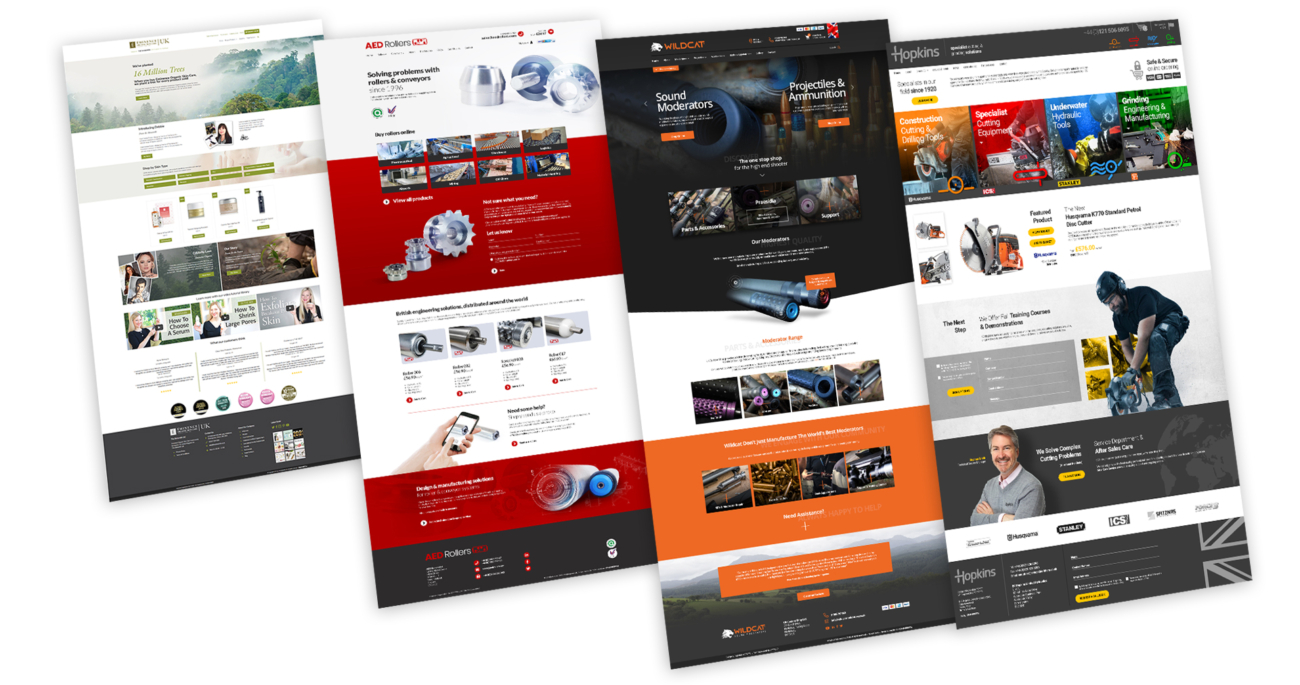eCommerce website designed to deliver results
We believe when it comes to eCommerce solutions, it’s not just about the design, the targeting, and the trust factors – it’s about the ease of use too. And whilst putting your products to the fore is important, giving consumers a clear path to purchase these products is the key to eCommerce success.
With over two decades of experience designing, building, and perfecting client managed eCommerce websites, Omnisity is able to encompass every aspect of eCommerce design and development, from the website itself to the full complement of ongoing digital marketing services.
All this is complete in line with your business branding and objectives, which lays the foundation of all that we do.
Ensuring your eCommerce website is fit for your business goals!

Our eCommerce Sites Drive Users to Purchase.
Don’t Miss Out on Extra Income.
eCommerce sites which accelerate performance through ease of navigation from product to shopping cart. All developed by Omnisity. Take a look through a selection of our websites that have generated remarkable results for our clients as part of our eCommerce website development services.
What Are the Benefits of Ecommerce Websites?
eCommerce stands for "electronic commerce" and refers to any type of transaction made over the Internet, but most commonly to the buying and selling of goods online. An eCommerce website is a type of website which facilitates commercial and business sales, allowing your consumers to buy products through your website.
Some of the benefits of eCommerce sites include:
Global Reach.
eCommerce websites allow you to display your products to audiences on a global scale.
Zero Time Restrictions.
Consumers can browse products 24/7, 365 days of the year, unlike a brick-and-mortar store which is subject to opening times.
Repeat Custom.
Customer retention is more achievable with eCommerce sites which allow you to engage with customers through customer accounts and targeted messaging.
Scalability.
eCommerce websites are scalable in line with the developments of your business and products.
User Experience.
eCommerce sites cater to consumers looking to buy a product immediately, creating a great user experience.
Follow-Up Opportunities.
eCommerce websites encourage potential consumers to leave their details to create an account or make an enquiry, creating opportunities for you to follow up on warm leads.
Customisable.
eCommerce websites are bespoke, and you can continue to make changes after the site is live so that it reflects price changes, promotional offers, and stock availability.
Performance Analytics.
Track your website’s performance and analyse how your consumers navigate your website to optimise your website for greater performance.
Say hello
ECommerce vs Informative: What’s the Difference?
eCommerce websites are designed for the digital sale of products – letting consumers buy the products directly through the website. Informative or advertorial websites, on the other hand, largely contain content which raises awareness of your business and informs your customers of your available products and services.
Want to Learn More?
There are three main types of eCommerce – business-to-business (B2B), where online transactions take place between two businesses. Business-to-consumer (B2C), meaning a business sells a product directly to a consumer. Consumer-to-consumer (C2C), where consumers sell goods to other consumers.